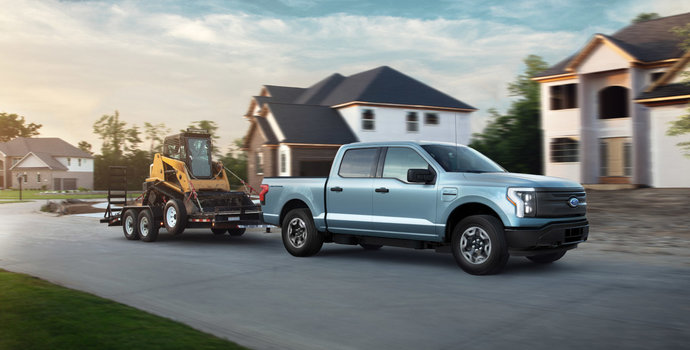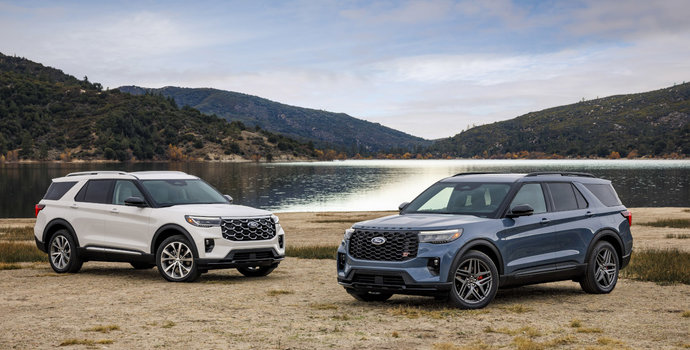With spring here, plenty of people around Barrie are looking forward to the warmer temperatures and longer days. So, it’s not surprising that many drivers are making plans that involve spending more time out on the road. However, after a long winter, there’s one thing that you should think about, and that’s some after-winter vehicle maintenance.
You’ve been using your car throughout the season, and the winter is one of the roughest seasons on cars. After all that operation, you can’t just assume that your car, though still working, is in tip-top condition. There are some preventive spring vehicle maintenance measures you can take, and one of the most important is wheel alignment.
What is Wheel Alignment?
While it might seem like the name tells you everything you need to know, you might wonder, what does having my wheels aligned actually do? Why is having wheels out of alignment a bad thing?
When we talk about wheel or tire alignment, we’re not referring to the wheels, but the axle and suspension system that is attached to the wheels. Alignment is all about ensuring matching “angles.” In the simplest sense, wheel alignment is about making sure that your tires are not just straight, but match in “straightness.” When your car is not in motion, with the wheels in neutral, creating a 90° angle, for example, then all of the wheels should be at a 90° angle as well. That is under ideal conditions, and months on the road, driving on uneven surfaces, hitting bumps and potholes, or even just gradual wear and tear can change things. If the alignment changes, then one or two wheels may be at 90°, while others are at 95° or 86°.
Why Does Wheel Alignment Matter?
It might not seem like a serious problem compared to an engine malfunction, but over the long term, ignoring wheel misalignment can impact the performance, reliability, and even ease of driving of your car. If you decide to ignore your wheel alignment and keep on driving, you will likely experience one of these issues while out on the road:
Increased Tire Wear
You may find—or an expert may tell you —that some of your tires are wearing down faster than others. Tire wear is a perfectly natural effect and is generally just a matter of time since the tires themselves are in constant contact with the road. However, tires should generally wear down at similar rates. When some tires wear out faster than others, they are taking on more than their fair share of the load of the car.
Steering Difficulties
Your car should be a machine you trust to do what you want it to when you need it to. As wheels move further and further out of alignment, that trust changes. Without proper wheel alignment, you may find yourself "fighting" your car to stay in the direction you want. You'll have to develop a new set of driving reflexes to compensate for the steering behaviour your car now displays that will get worse with time.
Reduced Fuel Efficiency
You’ll also end up paying more for your gasoline because you’ll be using it more. Different aspects of your car determine its fuel efficiency, including how often you need to adjust your steering. Fighting your steering often means changing your speed, and the more accelerating and decelerating you do, the more fuel you consume. So, by choosing to ignore your wheel alignment, you’re showing your willingness to visit the gas station more frequently and pay more on your fuel bills.
When Do You Need Wheel Alignment?
Fortunately, misaligned wheels are not like some hidden illness that only makes itself known as the worst symptoms manifest. Your car will give you plenty of warning that your wheels are out of alignment; you must be willing to listen and take appropriate action with some spring vehicle maintenance. Keep an eye out for these symptoms.
Your Tires Squeal
If you’re driving normally, and you hear your tires squealing even though you’re not turning tightly, or rapidly accelerating, that is a big hint. Tires squeal because their contact with the road is not what it should be, and they react by making these noises. Sudden accelerations, braking, tight turns, low tire pressure, and misalignment all cause tires to squeal.
Your Fight to Remain Straight
If you drive and find that leaving your steering wheel alone naturally causes your car to start drifting in one direction or another, which is another big hint. Your tires are trying to move straight, but if they are not aligned, then “straight” becomes different directions to different tires.
You See Uneven Tire Wear
If you inspect your tires or an expert does and notes that one tire or set of tires is wearing away faster than the others, you’ve got a good clue. The more obvious the wear is on one side, the more out of alignment your wheels are likely to be.
Wheel Alignment is for Old Tires & New Ones
If you've been driving with all-season tires and wish to continue to use them, it's a good idea to get some spring maintenance and have them checked out for a wheel alignment. On the other hand, if you've been enjoying the increased traction of winter tires over the season and are now thinking about switching over, then make sure that a wheel alignment is part of the procedure whenever you get new tires installed. It's not enough to just put new tires on and assume that everything is fine. Careful alignment should always be part of this process and confirmed once a new set of tires is on your vehicle.
Make sure your car is ready for another season on the road. Take some time out to get your tires checked and the wheel alignment adjusted so you can enjoy a smooth, reliable drive where you’re always in control.







